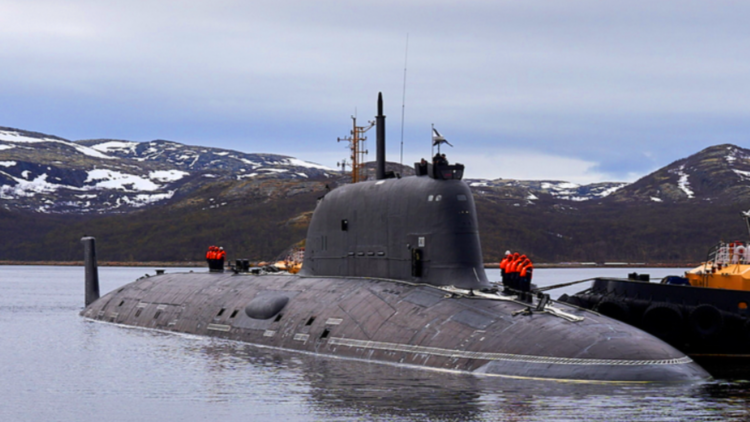A squadron of advanced Russian warships, including the nuclear-powered submarine Kazan, has stirred international attention after concluding missile drills in the Atlantic Ocean and arriving in Havana, Cuba.
The drills, meticulously monitored by the United States, unfold against the backdrop of the ongoing war in Ukraine, further straining relations between Russia and the West.
The Kazan, a Yasen-M class submarine, represents the cutting edge of Russia’s underwater arsenal. These vessels boast exceptional stealth and maneuverability, making them incredibly difficult to detect and track.
According to the Russian Ministry of Defence (MoD), the Kazan and its companion, the Admiral Gorshkov frigate, conducted simulated missile strikes against targets over 600 kilometers (373 miles) away, showcasing their long-range offensive capabilities.
Additionally, the Admiral Gorshkov flexed its defensive muscles with drills repelling simulated air attacks, the Russian MoD said in a statement on Tuesday, June 11.
While the Pentagon officially downplayed the immediate threat posed by the drills, as reported by USNI News, a spokesperson acknowledged their broader significance:
“These actions will likely culminate in a global Russian naval exercise this fall,” the statement read.
This suggests the drills might be a prelude to a larger display of naval might by Russia.
Two-Pronged Strategy: Power Projection and Advanced Weaponry
Analysts see this activity as a two-pronged strategy.
Firstly, it demonstrates Russia’s ability to project military power on a global scale, defying perceptions of being bogged down in Ukraine.
Secondly, the presence of the Admiral Gorshkov frigate, armed with the hypersonic Zircon missiles, sends a clear message to the West about Russia’s advanced weaponry.
Already have an account? Sign In
Two ways to continue to read this article.
Subscribe
$1.99
every 4 weeks
- Unlimited access to all articles
- Support independent journalism
- Ad-free reading experience
Subscribe Now
Recurring Monthly. Cancel Anytime.
Hypersonic missiles like the Zircon travel at speeds exceeding nine times the speed of sound, rendering current missile defense systems practically useless.
Their inclusion in these drills underscores Russia’s commitment to developing and deploying cutting-edge military technology.
Russian Warships and a Nuclear Missile Submarine are In America’s Backyard
The missile frigate Admiral Gorshkov, accompanied by the nuclear-powered submarine Kazan and other support ships, has been monitored by the U.S. Navy and Coast Guard as they transit the Atlantic.
The… pic.twitter.com/6Pljn5QCQA
— 🛰️ Wars and news 🍉 (@EUFreeCitizen) June 12, 2024
Cuba Downplays Concerns, But Timing Raises Eyebrows
Cuba, a long-standing ally of Russia, has sought to assuage concerns about the drills and the subsequent port visit.
The Cuban Foreign Ministry emphasized the “historically friendly relations” between the two nations and portrayed the visit as a standard diplomatic courtesy.
However, the timing is noteworthy as this visit follows a warning from Russian President Vladimir Putin that Moscow could provide similar advanced weaponry to adversaries of the West if Ukraine continues to use Western-supplied arms to strike within Russia.
Global Security Implications: A Complex Landscape
The arrival of the Russian flotilla in Havana adds another layer of complexity to an already tense geopolitical landscape.
While the immediate threat to the United States appears minimal at present, these drills highlight Russia’s determination to maintain a robust global military presence and its willingness to arm its allies with sophisticated weaponry.
Additionally, the potential for escalation exists if the conflict in Ukraine continues to simmer.
Looking Ahead: Scrutiny and Anticipation
The coming months will likely see continued scrutiny of Russia’s military maneuvers, notably as the Pentagon anticipates a larger naval exercise this fall.
These drills, coupled with the Cuban visit, serve as a potent reminder of Russia’s military capabilities and its desire to remain a major player on the world stage.
The international community will be watching closely to see how these developments unfold and what implications they might have for global security.











COMMENTS
You must become a subscriber or login to view or post comments on this article.